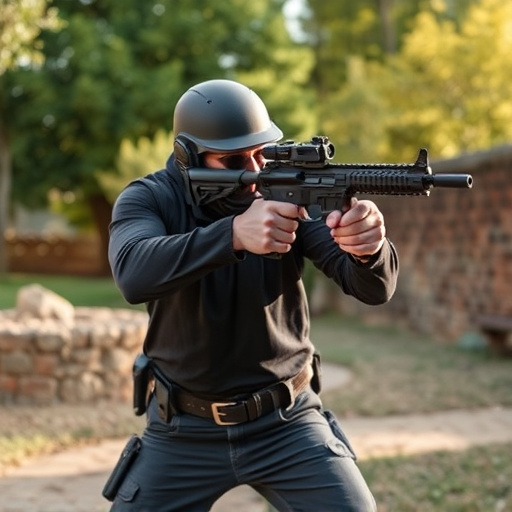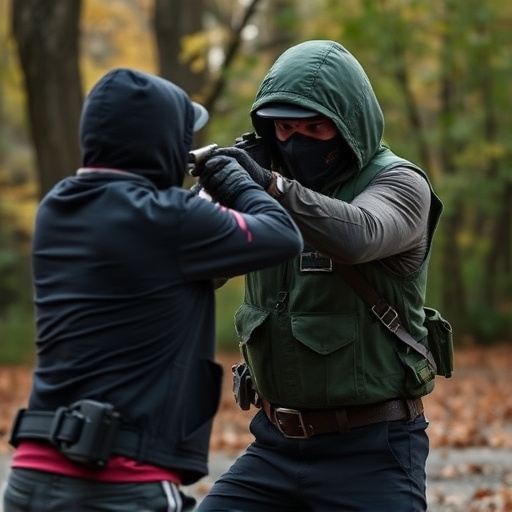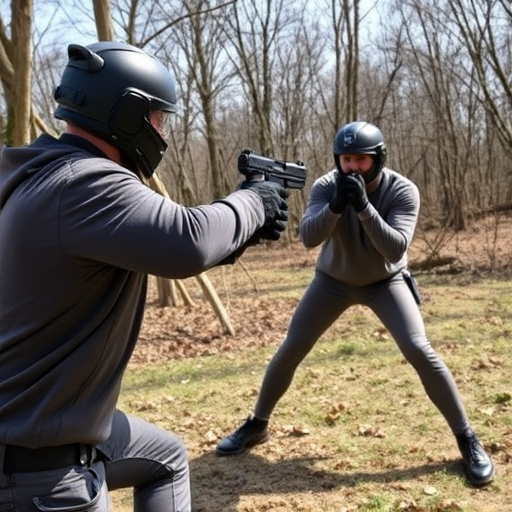Electricity's interaction with materials affects the performance of disguised stun gun self-defense tools, influenced by fabric conductivity, thickness, garment construction, and metal components. Understanding these factors is key to designing effective protective devices, as successful delivery of electric shock depends on quality, body type, and strike proximity, emphasizing the need for proper training and understanding limitations.
In today’s world, understanding how electricity interacts with materials is crucial, especially when it comes to personal safety. This article explores an intriguing aspect: voltage penetration through thick clothing. We’ll delve into the science behind electricity and its behavior in various substances. Key factors affecting voltage penetration will be examined, with a special focus on disguised stun guns—self-defense tools that rely on this principle. By understanding these dynamics, individuals can make informed decisions regarding their safety.
- Understanding Electricity and Its Behavior Through Materials
- Factors Affecting Voltage Penetration in Clothing
- Disguised Stun Guns: Tools for Self-Defense and Their Effectiveness
Understanding Electricity and Its Behavior Through Materials

Electricity, a fundamental force of nature, follows specific rules as it interacts with various materials. When considering voltage penetration through thick clothing, understanding how electricity behaves is crucial. Materials like fabrics and human tissue act as insulators, slowing down the flow of electric current. This characteristic significantly influences the effectiveness of disguised stun gun self-defense tools, which rely on delivering a jolt of electricity to incapacitate an assailant.
The behavior of electricity through different substances is complex. In some cases, voltage can penetrate deeply into materials, while in others, it encounters resistance that limits its propagation. This variation plays a critical role in designing and using self-defense tools effectively. By understanding how electricity interacts with fabric and human tissue, manufacturers can create more potent and reliable stun guns capable of providing necessary protection in emergency situations.
Factors Affecting Voltage Penetration in Clothing

The effectiveness of voltage penetration through clothing is influenced by several key factors. One of the primary considerations is the type and thickness of the fabric. Different fabrics have varying levels of conductivity, with some materials, like leather and certain types of canvas, offering more resistance to electric current flow compared to thinner, smoother fabrics like silk or polyester. The construction of the garment, including any padding or layering, can also play a significant role in impeding or facilitating voltage transmission.
Additionally, the presence of metal components or accessories attached to the clothing should not be overlooked. Disguised stun guns and other self-defense tools designed for stealth use often incorporate conductive materials strategically placed to maximize their impact when activated against an opponent’s body. The proximity of these devices to vulnerable areas can enhance the penetration depth of a shock, making them potent tools in close-quarters encounters.
Disguised Stun Guns: Tools for Self-Defense and Their Effectiveness

Disguised stun guns have emerged as innovative self-defense tools, offering individuals a means to protect themselves in various situations. These compact devices are designed to look like everyday items, such as flashlights or pen knives, making them easily concealable under clothing or within easy reach. This subtle approach to self-defense is particularly appealing for those seeking non-lethal options to deter potential attackers.
The effectiveness of disguised stun guns lies in their ability to deliver a powerful electric shock, temporarily incapacitating an assailant without causing permanent harm. The high voltage penetrates the body, disrupting muscle control and leading to a loss of balance or consciousness for a brief period. This can be crucial in creating an escape opportunity or summoning help. However, it’s important to note that their success depends on factors like the stun gun’s quality, the attacker’s body type, and the proximity of the strike, emphasizing the need for proper training and understanding of their limitations.
In understanding how voltage penetrates thick clothing, we’ve explored the interplay of electricity and materials. By examining factors like material composition, thickness, and moisture content, we’ve gained insights into the effectiveness of disguised stun guns as self-defense tools. While these devices can deliver powerful jolts, their success in real-world scenarios depends on proper usage and an awareness of clothing’s role in voltage transmission. Staying informed about these dynamics empowers individuals to make educated choices when considering self-defense options like disguised stun guns.
